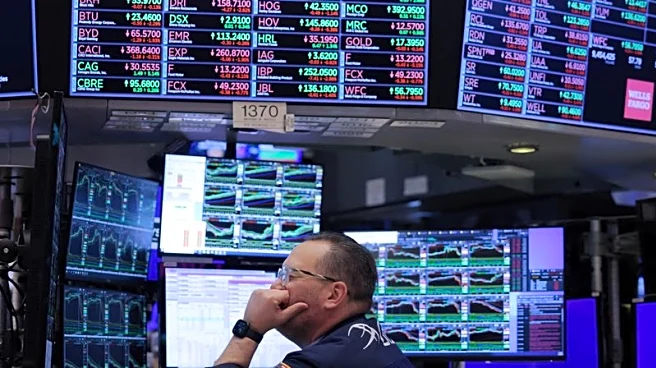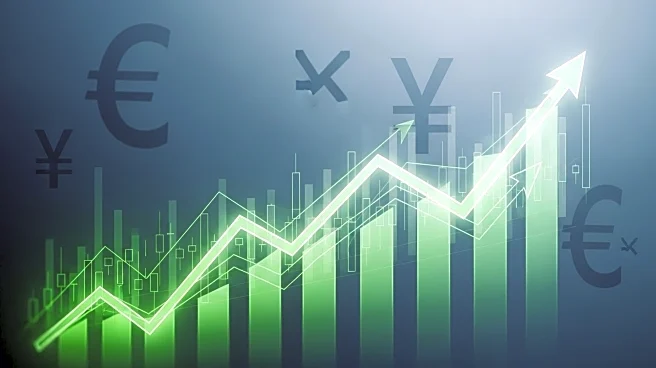What's Happening?
Recent market activity has shown signs of volatility, with the S&P 500 experiencing a slight decline. This comes amidst a backdrop of unusually low correlations among stocks and sectors, and high single-stock volatility. Despite these fluctuations, the market has managed to avoid significant downturns over the past two months. The semiconductor sector, particularly influenced by recent developments involving AMD and OpenAI, has seen a 2% drop. Oracle's data-center-hosting business has also faced scrutiny, leading to a decrease in its stock value. Meanwhile, consumer cyclicals, including housing and travel stocks, have shown weakness, challenging the notion of a robust consumer market. Despite these challenges, GDP tracking models indicate a 2%+ annual growth rate for the quarter, supported by corporate spending and fiscal deficits.
Why It's Important?
The current market conditions highlight the delicate balance between growth and volatility. The fluctuations in the semiconductor sector and consumer cyclicals suggest potential vulnerabilities in the market. The ongoing strength in gold, often seen as a safe haven, indicates investor caution amidst fiscal imbalances and diversification efforts. These developments could impact investor confidence and influence future market strategies. The performance of key sectors like technology and consumer goods will be crucial in determining the market's trajectory. Stakeholders, including investors and policymakers, must navigate these complexities to maintain economic stability.
What's Next?
Market participants will closely monitor upcoming economic data releases and corporate earnings reports to gauge the health of the economy. The Federal Reserve's monetary policy decisions will also play a critical role in shaping market expectations. Investors may adjust their portfolios in response to evolving market conditions, with a focus on balancing risk and opportunity. The performance of high-momentum sectors, such as technology, will be pivotal in determining the market's direction. Additionally, geopolitical developments and fiscal policies will continue to influence market dynamics.
Beyond the Headlines
The current market environment underscores the importance of diversification and risk management. As investors seek to navigate volatility, there may be increased interest in alternative assets and hedging strategies. The interplay between fiscal policy and market performance will be a key area of focus, with potential implications for long-term economic growth. The evolving landscape presents both challenges and opportunities for market participants, requiring a nuanced approach to investment and policy decisions.











